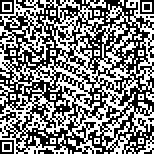徐基民,纪树荣,张蕴忱,孙岚,佟艳铭,崇敬.脊髓损伤患者骨密度变化的分析[J].中华物理医学与康复杂志,2004,(5):
扫码阅读全文

|
| 脊髓损伤患者骨密度变化的分析 |
|
| |
| DOI: |
| 中文关键词: 脊髓损伤 骨密度 骨质疏松症 负重 因素分析,统计学 |
| 英文关键词: Spinal cord injury Bone density Osteoporosis Weight-bearing Factor analysis, Statistical |
| 基金项目: |
|
| 摘要点击次数: 3746 |
| 全文下载次数: 4252 |
| 中文摘要: |
| 目的探讨影响脊髓损伤患者骨密度的因素及骨密度变化的部位差异。 方法回顾2000年5月~2002年12月290例脊髓损伤患者经双能X线骨密度仪(Lunar Prodigy型)测得的L4和股骨近端的骨密度资料,对其中进行了2~3次检查的81例患者的骨密度变化进行了进一步的分析。 结果骨密度与年龄、病程、体重指数及脊髓损伤神经学分类国际标准的运动评分等因素的多元逐步回归分析结果显示,L4骨密度与体重指数呈独立正相关(偏回归系数为0.0152, P<0.01;R2=0.059,P<0.01);对股部各测试区域骨密度有显著影响的共同参数依次为病程(偏回归系数为-0.0055~-0.0040,P<0.01)及体重指数(偏回归系数为0.0031~0.0162,P<0.01,Wards三角除外);比较81例患者的骨密度变化百分比[(前1次骨密度-后1次骨密度)/前1次骨密度×100%],L4的骨密度变化百分比(-0.7%)比股骨近端(4.5%)及各分区(3.4%~6.1%)的要小,各部位骨密度分别比较,差异均有极显著性意义(P<0.01);比较股骨近端各分区的骨密度变化百分比,股骨颈的下降程度最小(3.4%), 股骨干(4.2%)和Wards三角(4.9%)次之,股骨转子(6.1%)降低最为严重。 结论脊髓损伤患者骨密度影响因素及变化有部位差异。 |
| 英文摘要: |
| Objective To investigate the factors influencing bone mineral density (BMD) in patients with spinal cord injury (SCI) and the differences in BMD changes among different body regions. MethodsThe data obtained from a retrospective database of China Rehabilitation Research Center (CRRC) were analyzed. The BMDs at L4 and proximal femur of 290 SCI patients scanned by dual-energy X-ray absorptiometry (DEXA,Lunar Prodigy Mo-del) over the period of May 2000 to December 2002 were reviewed. A subset of 81 patients scanned for 2 to 3 times was further analyzed. ResultsThe multivariable stepwise regression analysis of such factors as age, duration of SCI, body weight index(BMI), the motor performance score with the International Standards for Neurological Classifications of Spinal Cord Injury, showed that only BMI was independently correlated with L4 BMD (partial regression coefficients B=0.0152, P<0.01; R2=0.059,P<0.01); in turn, the duration of SCI(partial regression coefficients B ranging from -0.0055 to -0.0040,P<0.01 in all tests) and BMI(partial regression coefficients B ranging from 0.0031 to 0.0162,P<0.01 in all tests) were the common powerful influencing parameters of the BMDs at the total hip and most of its subareas(except BMI at Wards trigonum). The percentage change in BMD [(the anterior BMD-the posterior BMD) /the anterior BMD*100%] at L4(-0.7%) was significantly lower than that at total hip(4.5%) or any of its subareas(3.4%~6.1%)(P<0.01 in all tests)respectively; among subareas in proximal femur of 81 SCI patients, BMD decrease was less serious at femoral neck(3.4%), worse at femoral shaft(4.2%)and Wards trigonum (4.9%),the worst at great trochanter(6.1%). ConclusionThe factors influencing BMD and BMD changes in SCI patients vary among body regions. |
|
查看全文
查看/发表评论 下载PDF阅读器 |
| 关闭 |
|
|
|